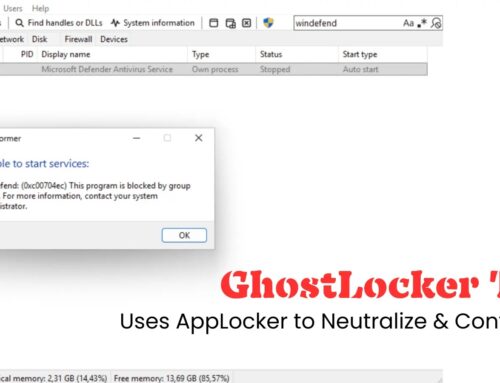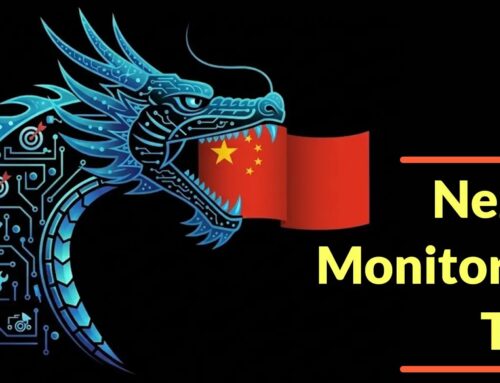
Chinese Hackers Actively Exploiting SharePoint Servers 0-Day Flaw in the Wild
In a significant and concerning development for global cybersecurity, Microsoft has issued urgent warnings regarding active exploitation of zero-day vulnerabilities in on-premises SharePoint servers by state-sponsored threat actors. Specifically, threat intelligence points to sophisticated campaigns orchestrated by Chinese state-sponsored groups, targeting internet-facing SharePoint installations.
This critical incident underscores the relentless nature of advanced persistent threats (APTs) and the paramount importance of immediate patching and robust security postures for organizations relying on this widely used collaboration platform.
The Zero-Day Threat: Authentication Bypass and Remote Code Execution
The core of this current threat lies in two critical zero-day vulnerabilities, identified as CVE-2025-53770 and CVE-2025-53771. These vulnerabilities, particularly impactful due to their “zero-day” status (meaning they were exploited before public knowledge or patching), enable adversaries to achieve two devastating outcomes:
- Authentication Bypass: This allows attackers to circumvent security measures designed to verify user identities. By bypassing authentication, unauthorized users can gain access to sensitive areas of a SharePoint server without needing valid credentials.
- Remote Code Execution (RCE): This is arguably the more severe aspect. RCE grants attackers the ability to run arbitrary code on the compromised server from a remote location. This can lead to complete system compromise, data exfiltration, installation of malware, or establishment of persistent backdoor access.
The combination of authentication bypass and RCE in on-premises SharePoint deployments presents an immediate and severe risk. Organizations utilizing these versions are directly exposed to potential data breaches, operational disruption, and significant reputational damage. The fact that state-sponsored actors are leveraging these flaws indicates a high level of sophistication and a clear strategic objective, likely intelligence gathering or intellectual property theft.
Who is Affected?
Any organization running on-premises SharePoint servers is potentially vulnerable. This includes a vast array of businesses, government agencies, and educational institutions worldwide that rely on SharePoint for document management, internal communication, and collaboration. Cloud-based SharePoint Online instances are typically patched by Microsoft and are less likely to be directly affected by these specific on-premises vulnerabilities, though all cloud users should maintain vigilance regarding their broader security configurations.
Understanding the Adversary: Chinese State-Sponsored Groups
Microsoft’s confirmation that Chinese state-sponsored threat actors are behind these attacks highlights a growing trend of nation-state involvement in cyber espionage and industrial espionage. These groups are renowned for their persistence, resourcefulness, and ability to identify and exploit high-value targets. Their objectives often align with national strategic interests, including economic advantage and intelligence gathering. The use of zero-day exploits signifies significant investment and capability in offensive cyber operations.
Remediation Actions and Mitigations
Immediate action is critical for any organization operating on-premises SharePoint servers. Proactive defense can significantly reduce the risk of compromise.
- Apply Patches Immediately: Monitor Microsoft’s security advisories and promptly apply all available security updates for your SharePoint servers. Since these are zero-day vulnerabilities, out-of-band patches or hotfixes may be released. Prioritize these updates.
- Isolate Internet-Facing SharePoint Servers: If direct external access is not strictly necessary, consider isolating SharePoint servers from the public internet. Implement strict firewall rules to limit inbound and outbound connections to only what is absolutely required.
- Network Segmentation: Implement strong network segmentation to limit the lateral movement of attackers if a SharePoint server is compromised.
- Implement Multi-Factor Authentication (MFA): While these vulnerabilities involve authentication bypass, robust MFA for all user accounts, especially administrative accounts, remains a critical defense-in-depth measure to protect against other attack vectors.
- Regular Vulnerability Scanning and Penetration Testing: Conduct frequent vulnerability assessments and penetration tests specifically targeting your on-premises SharePoint deployments to identify and remediate weaknesses.
- Monitor Logs for Anomalous Activity: Implement robust logging and monitoring for SharePoint servers, including access logs, authentication attempts, and file modifications. Look for unusual login patterns, unexpected file access, or attempts to execute unrecognized processes. Integrate these logs with a Security Information and Event Management (SIEM) system.
- Endpoint Detection and Response (EDR): Deploy EDR solutions on servers to detect and respond to malicious activities post-exploitation.
- Principle of Least Privilege: Ensure that all user accounts, and particularly service accounts, operate with the minimum necessary privileges required for their function.
Relevant Tools and Resources
Leveraging appropriate tools can aid in detection, analysis, and mitigation efforts for SharePoint environments.
| Tool Name | Purpose | Link |
|---|---|---|
| Microsoft Defender for Endpoint | Advanced endpoint protection and EDR capabilities. | https://www.microsoft.com/en-us/security/business/microsoft-365-defender/microsoft-defender-for-endpoint |
| SharePoint Health Analyzer | Built-in health monitoring and configuration analysis for SharePoint. | https://learn.microsoft.com/en-us/sharepoint/administration/sharepoint-health-analyzer-rules-reference |
| Splunk / ELK Stack (Elasticsearch, Logstash, Kibana) | SIEM solutions for centralized log collection, analysis, and alerting. | https://www.splunk.com / https://www.elastic.co |
| Nessus / Qualys | Vulnerability scanners for identifying known vulnerabilities in network devices and applications. | https://www.tenable.com/products/nessus / https://www.qualys.com |
| WireShark | Network protocol analyzer for deep packet inspection and traffic anomaly detection. | https://www.wireshark.org |
Conclusion
The active exploitation of zero-day vulnerabilities in on-premises SharePoint servers by Chinese state-sponsored groups presents a critical threat that demands immediate attention. Organizations must prioritize patching, implement rigorous security controls, and enhance their monitoring capabilities to protect these vital assets. Failure to swiftly address these vulnerabilities can lead to severe compromises, underscoring the ongoing need for vigilance and proactive cybersecurity measures in an evolving threat landscape.





